Videologic Neon 250
Based on the fabled PowerVR series2 chip, does it live up to expectations?
- VideoLogicPrice - £120-130
System Requirements - P133 or equivalent 32Mb RAM
What Is PowerVR?
Before I jump into the review, I'm just going to recap on the history of PowerVR technology.
Most modern 3D graphics cards draw all the triangles (polygons) in a scene, and then pass them through the rendering pipeline in order to texture them.
In doing this they perform a depth calculation (utilising the z-buffer) that helps to reduce the number of triangles rendered by the chip, by removing the triangles that cannot be seen.
Unfortunately if a triangle is partially visible, it cannot just discard it. Instead it must be rendered as if it was totally visible. This process of rendering polygons which are never seen is called overdraw.
The PowerVR's architecture works in a very different way, and in fact thrives in a high overdraw environment. I hear you asking "Why?".
Simply put, the rendering engine on the Neon 250 only draws polygons that are actually going to be seen on the screen.
It divides the screen into a series of smaller squares called tiles, and then by a process of depth sorting, the tile is rendered with only the pixels that are directly visible. The render engine then passes on to the next tile.
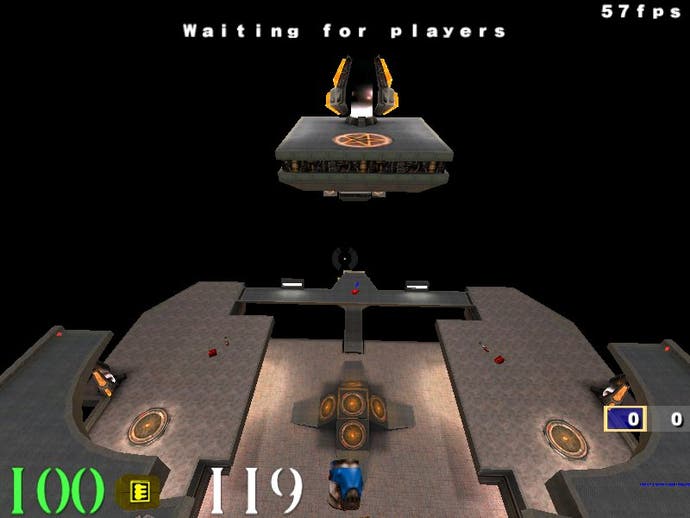
Overdrawn
This process is called deferred rendering, and thanks to the depth sorting (which is done on the fly in hardware) there is no need for a z-buffer.
As no z-buffer is needed, less memory bandwidth is required, or alternatively the memory bandwidth available can be used more efficiently - which is the case here.
Videologic have quoted a fill rate of between 200 and 500 MPixels/sec, which is not strictly true. The Neon 250 has a base fill rate of just 125MPixels/sec, as it can render 1 pixel per clock and with a clock speed of 125MHz this becomes the base fill rate.
But as soon as you introduce overdraw in a scene, the "effective" fill rate increases. So with an average overdraw of 2 the fill rate is effectively 250MPixels/sec. If overdraw is an average of 4 then fill rate effectively reaches 500MPixels/sec.
This may seem like a cheat, but it isn't really bearing in mind that any standard chip like a TNT2 will have to render a lot of information that is never seen. In order to keep the framerate up, cards like the TNT2 must increase their fill rate.
The Neon 250 on the other hand will only draw what is visible, and with most games containing significant overdraw, it should have no problem matching other chips on the market...
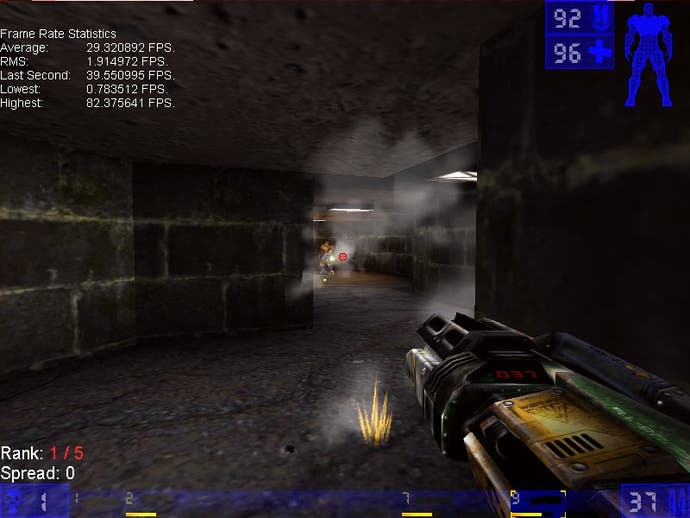
What You Get For Your Money
The card is a relatively plain green board that features the PowerVR series2 chip and four memory chips. And that's it. Other than a heatsink there is nothing more on the board, and it looks rather unassuming when compared to the likes of a TNT2 Ultra board.
Unlike a lot of other boards on the market there is also no TV-out which is a shame, although in reality how many of us actually play games on our TV? Admittedly there is the potential of playing DVDs on the TV, but usually the TV-outs do not provide a picture that can rival a dedicated decoder, whether it be a PC based one or a stand-alone unit.
One interesting thing to note is that originally Videologic had planned to market the Neon 250 with only 16Mb of SDRAM, but thanks to the fluctuating memory prices they decided to go with a 32Mb solution.
This doesn't actually add too much of a performance increase, as the memory is used more efficiently than with other designs, but at least it allows for more texture storage which is always a plus.
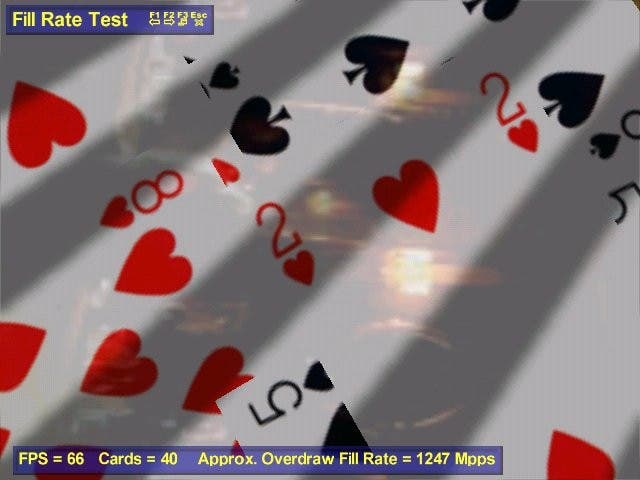
Software
On the software side, Videologic have supplied a CD filled with not only the essential drivers, but also some technology demos that show off some of the more advanced features of the architecture.
One of the more impressive is the overdraw demo, which really shows PowerVR coming into its own. Thankfully these can (in some cases) be run on other hardware which allows you to see how the performance of your old card matches up to the Neon 250.
Also on the CD is a selection of game demos that help show off the card further. These include the memorable Incoming, the not-quite-so-good-but visually impressive Klingon Honour Guard, the oh-so-tedious Thief (well in my opinion anyway) [EDITOR - take that man out and shoot him!] and the great-for-a-laugh Rollcage.
As I have said there are others, and these will all work very nicely on the Neon 250, which means that should you own the full versions of any of them you can expect some very nice fluid graphics.
All in all the bundle is pretty good, and the supplied demos are all fairly recent (which is a bit of a change) which helps make the whole deal more attractive.
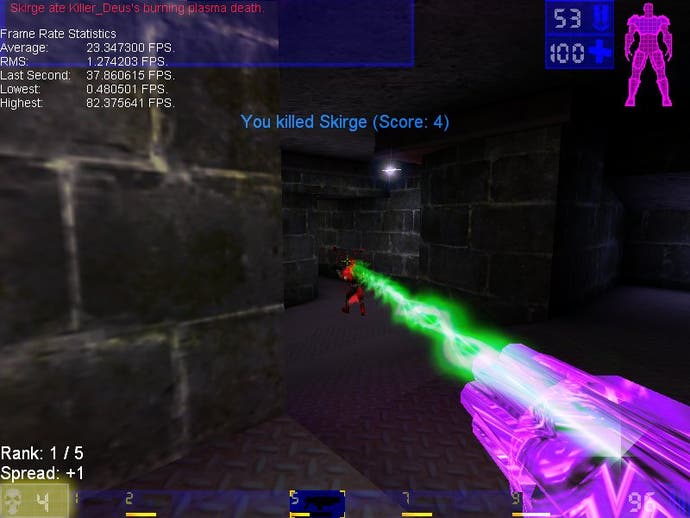
Quality Control
Unfortunately everyone will no doubt be more interested in how the card performs on forthcoming titles like Quake III Arena and Unreal Tournament.
To this end I have included some shots of these games running on the Neon 250 to show that it looks every bit as good as a TNT2 based card. You can find these scattered throughout the review, with a few more on the last page.
The picture I have painted so far seems to be a very rosy one, and certainly puts the Neon 250 in a good light. It is a good card, but I wouldn't be doing my job if I didn't report on any issues that affected the Neon 250. "What issues?" I hear you cry.
Due to its tile based nature, some graphical glitches do occur. Some titles throw up problems for the Neon 250, and one of the more important ones is Unreal Tournament.
Now from the screen shots (which were taken at 800x600x32) there are no noticeable effects, but when the resolution is pushed to 1024x768 there are a few graphical glitches which, while they do not affect the gameplay in any way, certainly detract from the overall experience.
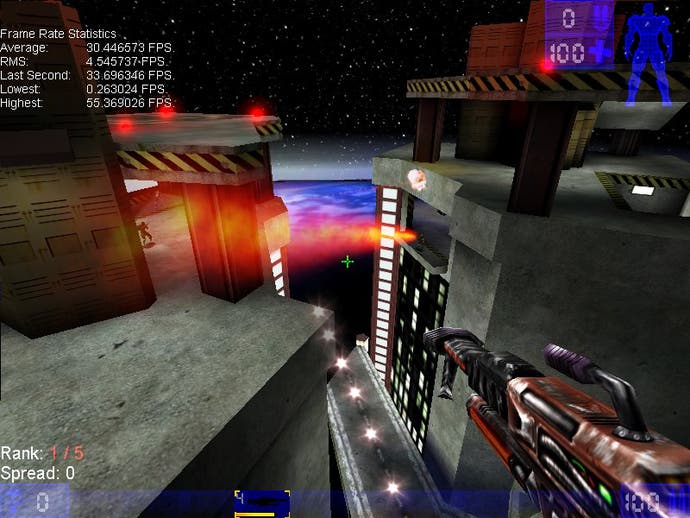
Conclusion
That said, the guys at VideoLogic are constantly working on new drivers, and they have certainly come on a long way in both quality and performance.
They are also working with the game developers in order to ensure that patches will be created for existing titles, and that new titles will have no problems.
At this price point the Neon 250 is a very competent card (as can be seen from the benchmarks below), and certainly deserves consideration if you are intending to purchase a new graphics card and not spend the earth on it.
Benchmarks
Tests were done on the following system -
P2 450 Abit BX6 rev2.0 motherboard 128Mb RAM 9.1Gb Seagate Cheetah 10000rpm Ultra2 HDD All drivers - latest downloadable versions







